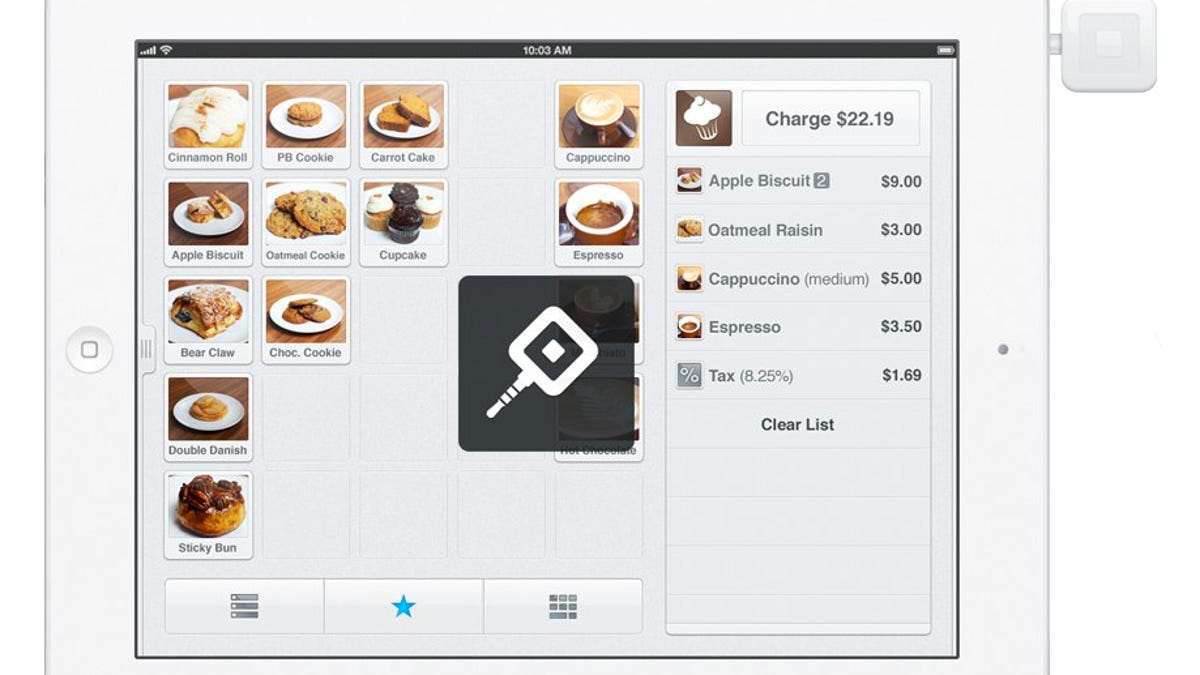Metrics Watch: What does Square's $4B in transactions really mean?
The mobile payments startup won some great press after announcing it's processing $4 billion a year. It's not as terrific as it seems.

Jack Dorsey and the brass at Square--the startup he runs when he's not doing duty as executive chairman of Twitter, the other company he co-founded--always gets amazing press.
And often deservedly so. Square's main product, a sleek device that turns the iPhone into a credit card processor, is a game changer for many. It's made it easy for individuals and small vendors to accept credit cards with little hassle, paying a flat transaction fee of 2.75 percent.
Square late Sunday blasted out news about a new product, an iPad app called Square Register, that won it some solid coverage about how this could prove powerful as Square tries to replace cash register. Square is not a startup with small ambitions. And at the same time, the company tossed out a really big number to show off how just fast Square is growing.
It said it's handling $4 billion a year in transactions, and Jack Dorsey this morning took to Twitter to make the announcement to his more than 1.9 million followers:
Last October @Square was processing $2 billion a year. Today we're processing $4 billion a year.
— Jack Dorsey (@jack) March 5, 2012
It sounds terrific. Square is now processing twice the amount on an annualized basis than it was in October, which was the last time it promoted such a number, and the press seized on the metric. But it's not as good as it seems at first blush, and in fact smacks of what Eric Ries, a Silicon Valley hero whose Lean Startup method has become scripture to many, criticizes as "vanity metrics."
"You can't fault them," Ries told me. "They are using this publicity well, and it's enhancing their brand. But if I came to you and said I found way to improve my business through lying, most people would be queasy about it."
That's a strong statement, so let's back up for a moment. Companies large and small often manipulate metrics to gain favorable coverage and the press (yes, including CNET) often falls for the strategy. The key problem, Ries argues, is that businesses are highlighting metrics that are simply the wrong data points to evaluate how well a business is doing.
When Ries sees Square doing this, he assumes that Square is using the gullible press as a way to sign up more customers, which he views as a bad sign.
So what do Square's metrics show and how is the business doing?
It's hard to tell because Square won't release enough information or answer specific questions. What it's saying is this: in October, it had more than 800,000 people who had Square and were able to accept credit cards. By December, the last time it released a comparable figure, it had more than one million people who had a square device.
Presumably, that number has grown between December and today. But for now let's just take the numbers we know and calculate how much revenue Square brings in per merchant/individual since we know that Square takes a 2.75 percent cut. This would be a telling figure.
If one million Square users are handling $4 billion in transactions, that means Square is generating $110 million in revenue on an annualized basis. That comes out to about $110 per user per year. Do the same basic calculation with 800,000 users and $2 billion in processed transactions and it comes out to $69 in revenue per user per year.
Again, these numbers aren't perfect--if the number of Square users has grown since December that would make its revenue per user lower than the $110 figure. But this gives us a sense. It shows that while the amount processed has doubled, the amount of revenue per user has grown 59 percent.
That doesn't sound terrible, but it certainly doesn't have the same ring as saying amount its processing doubled to $4 billion. It's hard to imagine Dorsey zapping out this Tweet: "Square's revenue per individual rises 59 percent in 5 months to $110 per user!"
The response would be...huh? And then questions would follow: Why five months? That sounds random. Is $110 per user good? It sounds like some people signed up for Square and aren't using it? Who are the power users? How much are you spending to get users? And so on.
Those are all valid questions, especially for a company that has raised $168 million since it launched in November 2009 . Unfortunately, Square isn't yet answering them and is instead relying on vanity metrics.

